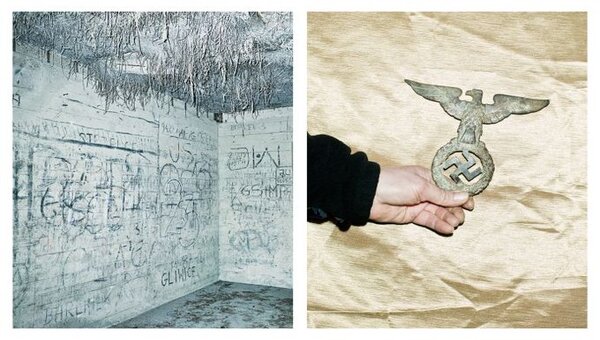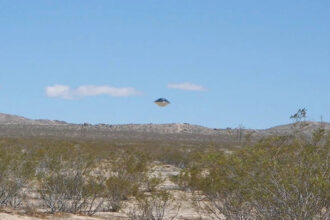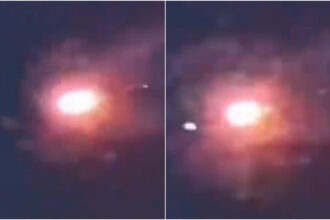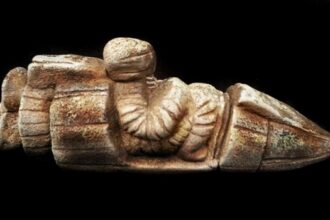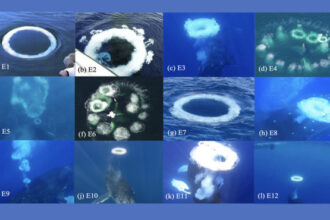A team of treasure hunters in Poland has been granted permission to begin excavations in search of a Nazi treasure. After a decade of private investigation, the team is ready to start work at a former SS training ground in the Kashubia region, where, according to local legend, a secret Nazi hoard may be buried.
On July 1, the Provincial Conservator of Monuments of Pomerania, Poland, granted permission to investigate a hidden bunker near the site of the Second World War SS barracks and an abandoned military training area.
According to engineer Jan Delingowski, a former merchant navy radio officer turned history enthusiast, the stash was moved west in 1945 from the vaults of Königsberg (now Kaliningrad) but never made it to Berlin.

The Search for the Nazi Treasure in Poland Was Inspired by a Prisoner in Barczewo Prison
Delingowski’s decade-long private investigation was driven by a former inmate of Barczewo Prison, who claimed to have met war criminal Erich Koch there in the 1980s. Koch, the last Oberpräsident of East Prussia, was convicted in 1959 for atrocities that claimed around 400,000 Polish lives. He was never executed, allegedly because security services hoped to discover the treasure’s location.
“According to the prisoner’s account, Koch revealed that works of art, jewelry, and Nazi gold were loaded onto trucks bound for Berlin but diverted near Czersk and Człuchów,” Delingowski said.
He added that Allied-era telegrams allegedly received by SS officer Gustav Wyst referred to a cache marked only with the code “BSCH,” which Delingowski interprets as an abbreviation for Bruß Schutzraum, a slit-type bunker believed to be located beneath a hill overlooking a nearby lake.
The Treasure May Contain Priceless Art and Precious Metals
If found, the treasure could include priceless works of art, precious metals, and possibly panels from the Amber Room, a baroque chamber looted from Tsarskoe Selo near St. Petersburg. The Amber Room vanished after Nazi occupation forces dismantled it in 1941; its fate has fascinated historians for decades, spawning theories of sunken ships and secret Alpine vaults.
Dr. Katarzyna Nowak, a historian at the University of Gdansk, urged caution. “There are many legends about hidden Nazi treasures in Poland and elsewhere. While these excavations are exciting, rigorous archaeological methods and peer-reviewed analysis will be crucial to separate fact from folklore,” she said.
Initial ground-penetrating radar surveys have identified subsurface anomalies consistent with a hidden bunker. Excavation is scheduled to begin later this month under the supervision of the regional conservation office and in cooperation with qualified archaeologists.
Local Authorities to Closely Monitor the Excavations
Local authorities state they will closely monitor the work to ensure the preservation of any wartime relics and the integrity of the site. “Our goal is to uncover the truth behind these stories while protecting this historic landscape,” said Anna Kowalska, spokesperson for the Pomeranian conservator.
If artifacts are discovered, Poland’s cultural heritage laws require that any finds be cataloged and preserved in state museums. The decades-long quest to rediscover the Amber Room and other lost treasures of World War II has captured the public imagination. Now, for the first time in this corner of northern Poland, the search has official sanction.
Who Are the Seekers of the ‘Golden Train’?

“They are three men, each with different blood, but united by a single goal: to unearth the legendary golden train in Wałbrzych.” Paraphrasing the lyrics of Autobiografia by the band Perfect — considered one of Poland’s greatest hits of all time — this is how you can describe the trio trying to solve what many call “the mystery of the century.” They are not related by family, but they share the same purpose: finding the mysterious train near Książ Castle. If they are right, it will be an unprecedented discovery. And they have revealed a glimpse of who they are.
— We are three friends who formed the team Złoty Pociąg 2025 to solve one of the greatest mysteries of World War II in Lower Silesia: the alleged hidden train in the Wałbrzych area. Each of us is responsible for a different field of work — explains one of the group members, with whom we spoke about the case that has captured the imagination of people all over Poland and beyond, especially in the West.
According to the interviewee, one member manages social media and marketing, another handles legal matters.
— I am the discoverer (I won’t reveal my name for now). Thanks to my knowledge, experience, and exceptional dowsing abilities, I located a camouflaged railway tunnel and three wagons inside it. Using extensive dowsing research combined with other geodetic data, we created documentation that is complete from a physical, mathematical, and logical standpoint — he says.
The “discoverer” emphasizes that the documentation is extremely detailed and that the findings are unequivocal.
— By working across multiple geodetic points, we eliminated any possibility of error. There are no inconsistencies; everything is clear and corresponds to the truth. In my opinion, these three wagons that entered the tunnel carried assets of the Third Reich — primarily gold — intended as a foundation to rebuild the state at a time when the regime was collapsing.
He also stresses that the secrecy of the operation, the lack of documentation, and the enormous scale of the camouflage work clearly indicate that something extremely valuable was loaded into those wagons.
— Não se faz tanto esforço para esconder vagões inteiros, a menos que seja uma operação estratégica e secreta. Caso contrário, o trem teria sido abandonado em alguma estação. Este não foi abandonado; foi escondido para que ninguém jamais descobrisse.

How did they find the trail of the golden train — and why hasn’t anyone else discovered it?
— As with any great discovery, it started with an idea. I decided to check the legend of the “golden train,” the famous 65 km point cited by Mr. Koper. I always start my work with a preliminary computer analysis. I examined the site, analyzed laser scans of the terrain (LIDAR), topography, old maps… Right away, I found that spot absurdly unlikely for such an operation. So I started searching for areas where hiding a train would actually make sense and identified potential locations. Then came field visits, days and days collecting data and compiling the documentation that became the basis for registering the discovery.
— I can’t reveal the exact location, but I can say that it had already been considered decades ago as a possible hiding place. The difference is that no one had the courage and determination to carry out such a thorough study as we did.
The researcher claims the studies are:
- genuine,
- consistent,
- logical,
- and solid under every analysis.
— The amount of work and material used to conceal the tunnel is truly impressive. But that was standard practice for the German army (using forced labor). That’s why it’s so difficult for treasure hunters to find underground military facilities — they were perfectly camouflaged. This operation was secret (Geheim) and required extraordinary measures to ensure no trace remained. And yet, traces survived: oral accounts, rumors among former German residents of Wałbrzych, and the testimony of a Polish forced laborer. I also believe the railway line had to be shut down for several days during the hiding of the train. The secrecy of the operation would have required it.
Did they attempt to use equipment to confirm the discovery?
— No, we didn’t, because we don’t have access to such equipment. Besides, there are many young trees growing above the tunnel, which makes using ground-penetrating radar difficult without clearing the area. I used a dowsing method, which is considered controversial, but I can assure you that dowsing is physics plus mathematics — it’s just a field that is poorly studied and often practiced by people who don’t understand it at all.
— When it comes to detecting underground cavities, I am the best dowser in Poland — perhaps in the world. Mathematics, the “queen of sciences,” is essential in this type of work. When everything aligns mathematically, it forms a solid foundation for further study. Back in 2015, in Mr. Koper’s case, nothing added up. There was no logic, and logic is mathematics. If something is illogical, it simply won’t be there — and that’s exactly what happened at the 65 km site.
How do they plan to finance future excavations?
— Someone once told me, “The idea is the most important; the money will come later.” I took those words to heart. Of course, the most expensive part will be the earthworks using heavy machinery, but that’s the last stage. For now, our goal is to follow the plan and prove that the tunnel and wagons are exactly where we indicated. There are two ways to do that: using geotechnical equipment or drilling. That is our focus at the moment. Once this is confirmed, we’ll be in a much better position to negotiate with potential sponsors, and I believe retrieving the wagons won’t be a problem then.
The group is even considering launching an online crowdfunding campaign to cover the costs of geotechnical surveys or drilling, but they stress it’s still too early. “We’re moving step by step. First the permits, then the concrete actions,” says the researcher.
Who is the mysterious witness said to have confirmed the existence of the legendary train?
— I can’t reveal their identity yet. But I can say the witness shared a lot of intriguing information that strongly reinforces our belief that we did everything right and that every piece of the puzzle fits perfectly.
What about the legends of “guards” near Książ Castle?
— Those are just legends. No civilian had the right to know about secret operations; even a German civilian could be executed for seeing too much. The people guarding those areas after the war were tied to the Third Reich’s structures, but in most cases, they had no deep knowledge of what they were protecting. The objects were well camouflaged, but at the time, the work was still “fresh,” so that critical period had to be monitored by “guards” to ensure time erased the traces.
Will they collaborate with the other group that received permission to search in the Świdnica Forest District?
— Honestly, I can’t imagine two teams being authorized to investigate the same area. That would be a conflict of interest. We have no connection to what happened ten years ago at the infamous 65 km site, nor with Piotr Koper or Andreas Richter. We don’t want to be associated with that fiasco, which damaged the reputation of the entire treasure-hunting community. We are serious people, and our report is just as serious.
The interviewee concludes by saying that the Złoty Pociąg 2025 group plans to reveal their identities and hold a press conference later in July to present the report and research findings, although the date is still tentative.




